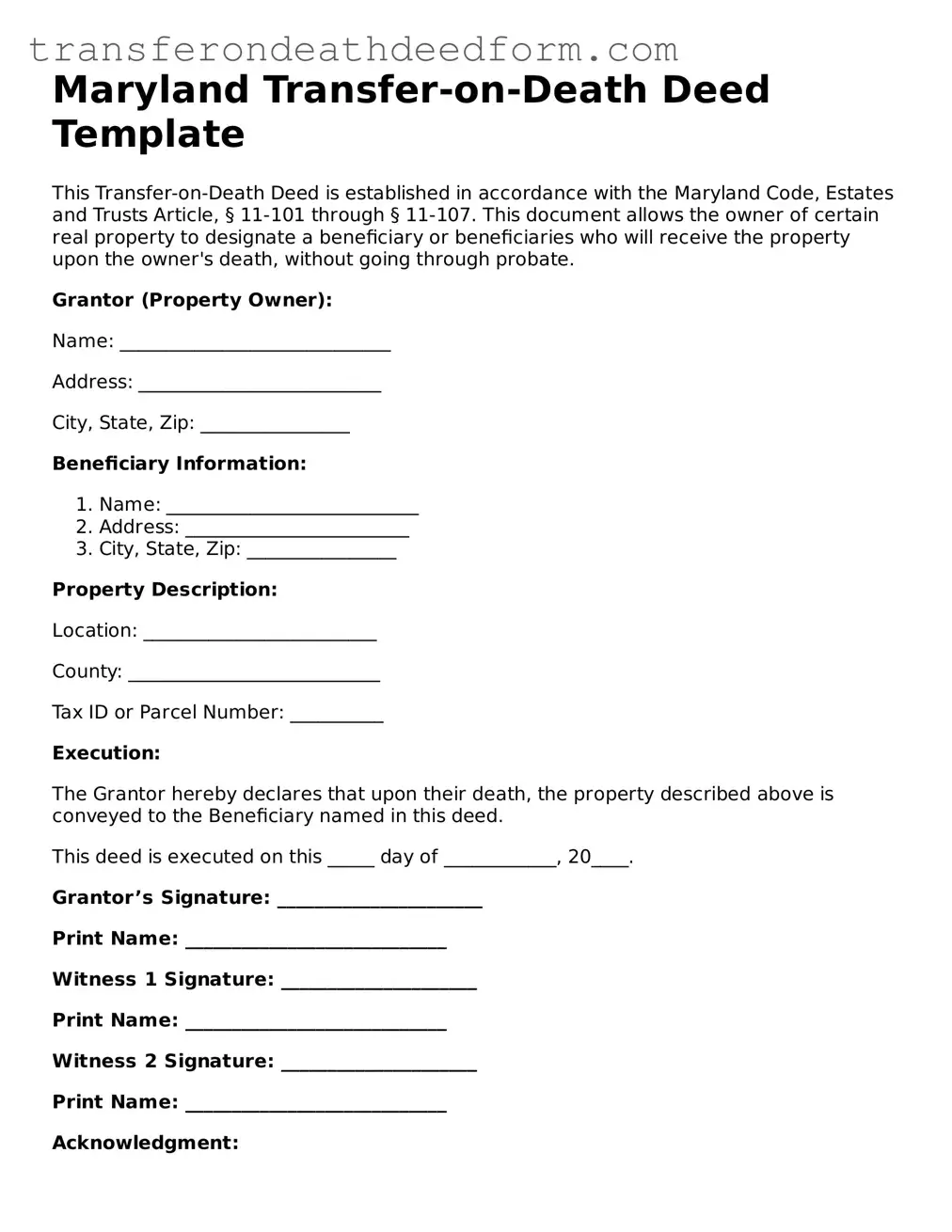Maryland Transfer-on-Death Deed Template
This Transfer-on-Death Deed is established in accordance with the Maryland Code, Estates and Trusts Article, § 11-101 through § 11-107. This document allows the owner of certain real property to designate a beneficiary or beneficiaries who will receive the property upon the owner's death, without going through probate.
Grantor (Property Owner):
Name: _____________________________
Address: __________________________
City, State, Zip: ________________
Beneficiary Information:
- Name: ___________________________
- Address: ________________________
- City, State, Zip: ________________
Property Description:
Location: _________________________
County: ___________________________
Tax ID or Parcel Number: __________
Execution:
The Grantor hereby declares that upon their death, the property described above is conveyed to the Beneficiary named in this deed.
This deed is executed on this _____ day of ____________, 20____.
Grantor’s Signature: ______________________
Print Name: ____________________________
Witness 1 Signature: _____________________
Print Name: ____________________________
Witness 2 Signature: _____________________
Print Name: ____________________________
Acknowledgment:
State of Maryland, County of ________________
On this _____ day of ____________, 20____, before me, the undersigned notary public, personally appeared ______________________, known to me (or satisfactorily proven) to be the person whose name is subscribed to the within Transfer-on-Death Deed, and acknowledged that they executed the same for the purposes therein contained.
Notary Public Signature: ___________________
My Commission Expires: __________________
